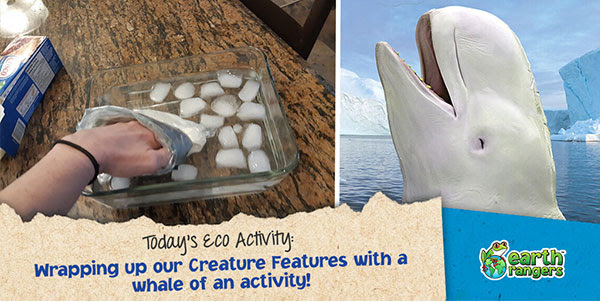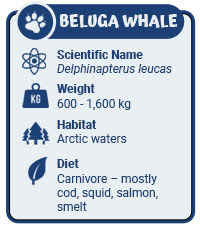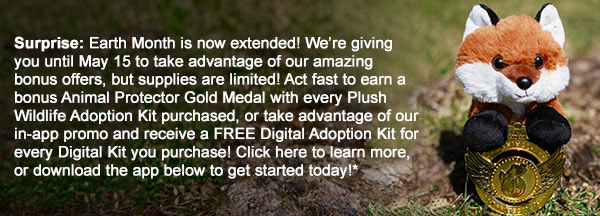
With Earth Month over, it’s time to say goodbye to our Creature Feature series, but we’re sending it off with a fun experiment perfect for your whole pod!

Belugas are an important part of the Arctic ecosystems they call home. They are a top predator, which means changes in their populations can have huge impacts on many species down the food chain. They’re also a critical resource for Indigenous communities. Sadly climate change is threatening their habitats, but you can help! Click here to learn more.
Did you know whales live in every ocean in the world?! These widely distributed wonders are some of the most recognizable mammals on the planet, and with their bright white skin and melon-shaped heads, the beluga is no exception! With all the time they spend roaming the chilly waters of the Arctic and sub-Arctic, you might be wondering how they keep warm. Today we’re going to show you firsthand!
Here’s what you’ll need:
– Vegetable shortening
– Icy water in a container large enough for little hands
– Medium-sized zipper sandwich bags
– Duct tape
Here’s what to do:

1) Use one of your bags as a glove to fill the other bag about a quarter full with shortening

2) Place the glove bag inside the bag with the shortening. Fold the edges over and secure it with duct tape. The goal is to keep the inside of the glove bag clean, so that when you reach your hand into the two bags taped together you’ll only feel the shortening through the bag!

3) Now it’s time to feel the chill! Place an ungloved hand directly in the ice water container. Cold, right?! Now, place your other hand in the water using your “shortening bag” was a glove. What do you notice? The shortening acts like blubber, which is the thick layer of fat that belugas have to help protect them from the frigid temperatures they live in. Thanks to some simple science, it’s easy to see how belugas keep warm!






Neat I always wondered how blubber felt in cold water
Cool activity. It was literally cool. Also interesting.